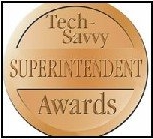
A competency-based learning program that blends face-to-face and online instruction, iBooks created for classroom lessons, and computers refurbished by students and donated for use by families: These are among the forward-thinking ed-tech initiatives led by winners of the 2013 Tech-Savvy Superintendent Awards from eSchool News.
In our 13th annual Tech-Savvy Superintendent Awards, sponsored by NetSupport, eSchool News recognizes eight of the nation’s top K-12 executives for their outstanding ed-tech leadership and vision.
Chosen by the editors of eSchool News with help from last year’s winners, these eight exemplary leaders will be honored in a series of national webinars beginning next month, in which they’ll share their ed-tech advice and the keys to their success. More information about these free webinars will be available soon at http://www.eschoolnews.com/events/webinars.
Here are this year’s winners, along with a brief description of their districts’ accomplishments.
 Lisa Andrejko
Lisa Andrejko
Quakertown Community School District
Pennsylvania
The technology initiatives that Andrejko has put in place for Quakertown Community School District (QCSD) provide a technology integration model for other schools nationwide. These include a one-to-one laptop initiative that started three years ago and will expand from grades 9-12 to 6-12 over the next few years, and a future iPad initiative for kindergarten students district-wide. Her blended learning initiative has been cited by Michael B. Horn, co-author of “Disrupting Class: How Disruptive Innovation Will Change the Way the World Learns,” in a Forbes.com blog post and at iNACOL’s Virtual School Symposium (VSS). QCSD also operates an in-district cyber learning program, called QCSD Cyber.
With guidance from program director Thomas Murray, QCSD Cyber has adopted many forward-thinking initiatives, such as attendance policies based on student achievement in a predominantly asynchronous, competency-based online learning environment; enrollment trial periods for all students; and hybrid-scheduling opportunities, allowing students to receive full-time cyber instruction either on or off campus, a blend of cyber and face-to-face instruction, or supplementary online courses beyond their scheduled work load. Ideas like these helped the QCSD Cyber and blended learning programs earn honors at VSS in 2011, securing iNACOL’s Innovative Online Learning Practice award.
In a new online learning partnership with the Bucks County Intermediate Unit in Pennsylvania, Andrejko forged a cross-district cyber teacher and professional development consortium known as Bridges Virtual. This now connects students across districts and counties to cyber teachers in different districts, all of which share student enrollment and resources while providing learning opportunities for students in QCSD and beyond.
Furthermore, the electronic communication systems in place under Andrejko’s leadership at QCSD have been a tremendous asset, especially for much-needed communication with the community during the recent Hurricane Sandy that devastated the county.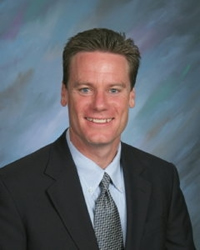 Kevin Baxter
Kevin Baxter
Archdiocese of Los Angeles Elementary Schools
California
In the Archdiocesan community—an area that is diverse in culture, access to resources, and socio-economic status across three counties—Baxter has inspired transformative change in the schools by chairing a massive technology initiative, the Catholic Communication Collaboration (C3) Pilot.
The 25-school C3 program includes features such as a student information system, learning management system, online content, and one-to-one computing modules for locations that otherwise could not afford the hardware. In the first year of the program, Baxter supported a series of “change management” workshops to ensure the pilot locations felt prepared and supported; in what is currently the program’s second year, the locations have taken advantage of their first annual technology conference with training opportunities. Baxter ensures that the participating schools maintain a Sharepoint page as a resource for technology news, webinar opportunities, and tracking of technology issues. When the pilot project began, all of the schools were iPad-centric, and Baxter helped lead the charge to explain that (1) there are other device options, and (2) a successful initiative is about baseline connectivity, requisite infrastructure, and professional development.
What was intended as a 25-location test run has become an opportunity for all locations. Baxter helped secure price protection for online content providers at all Archdiocese of Los Angeles schools, ensured that all locations are invited to technology training programs, directly facilitated change management, and recently funded more than 100 seats to the Los Angeles County Office of Education Technology Symposium.
Baxter believes the Department of Catholic Schools’ motto, “A Catholic education is an education for life,” and he seeks to ensure that students are successful throughout life and are steeped in an environment that supports technology to help ensure this motto is realized.
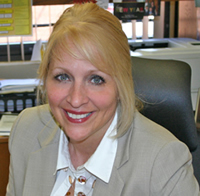 Theresa Dunkin
Theresa Dunkin
Aptakisic-Tripp Community Consolidated School District 102
Illinois
With her take-charge attitude, Dunkin has served the D102 school district as principal, assistant superintendent, and superintendent and has brought technology to every learning space in the district over the last seven years.
Today, every classroom is wireless, with multiple devices available for staff and student use. The 2012-13 school year has brought her vision of a personalized technology initiative to fruition, with every fifth and seventh grade student engaged in learning activities supported by personal iPads for use at school and home. Teachers participate in ongoing professional development, and every member of her cabinet and each school board member is connected to the D102 learning network through personal iPads.
Dunkin has led implementation of the core elements of the district-wide Learning Vision Into Action plan, bringing all stakeholders to the table to plan, implement, monitor, and adjust the district’s progress toward “deeper learning” supported by personal technology. What’s more, an intense professional development program known as TTL (Transforming Teaching & Learning) has provided more than 100 hours of training to help the 50 participating teachers transform their instructional practices to meet 21st-entury needs.
Ninety-five percent of D102 students are meeting Adequate Yearly Progress goals, and students participate regularly in morning broadcasts, synchronous and asynchronous collaboration, and multiple conferences to share their knowledge and skills with others. Dunkin established D102 as a member district in EdLeader21, a professional learning community for 21st-century education leaders, in 2011 and has brought the talent and expertise concentrated there to all levels of the organization.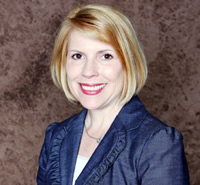 Suzanne Lacey
Suzanne Lacey
Talladega County Schools
Alabama
Under Lacey’s leadership, the accomplishments of this rural and high-poverty district for the past five years are unsurpassed by any other district in the state—and individualized, one-to-one computing initiatives are provided in the seven diverse high schools throughout the 7,700-student district.
Lacey was recognized in June 2012 as the State Superintendent of the Year at the Alabama Educational Technology Conference. Her leadership led to her first one-to-one school reform initiative being selected as one of the six programs in the nation to receive the National School Change Award in 2012. The district’s energy and green programs, supported by technological controllers, also garnered two schools National Green Ribbon Awards—the only ones in Alabama. Thousands of visitors from a wide array of educational and business venues constantly come to the school district to see her initiatives in action and seek direction in following the Talladega County models for technology integration that she leads.
Thanks to Lacey, the district-wide Student Technology Showcase will move to a two-day format owing to the many requests from other school districts, and there has been an increase in Advanced Placement and higher-level classes through video conferencing opportunities. The district’s success is based on the visionary leadership of a tech-savvy superintendent who fosters partnerships with all of her stakeholders for the benefit of students.
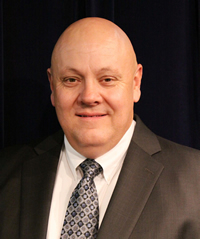 Randy Moczygemba
Randy Moczygemba
New Braunfels Independent School District
Texas
Moczygemba, who has led New Braunfels ISD for the past three years, is a firm believer that education is a 24-7 experience and that technology is an important tool to enhance instruction.
Moczygemba’s “flipped classroom” initiative taught teachers throughout the district how to create introductory lessons for engaging students in problem-based learning at home. When Apple first released its iBooks authoring software, he used the software to create an electronic version of the district’s course catalog to show his staff how they could create rich content for student use.
Moczygemba also led the implementation of a VTEL media system at the district’s Disciplinary Alternative School, allowing students to attend regular classes via two-way audio and video technology. This project allows students to return to their regular campus completely on track with their peers—while saving the district approximately $500,000 per year in staffing costs.
Epson projectors are installed in all district classrooms, and teachers use iPads to deliver instruction. The Ninth Grade Center opened with a one-to-one computing initiative, with all 610 students having an iPad for 24-7 use. The district plans to expand its iPad initiative to grades 10-12 in 2013 and grades 6-8 in 2014.
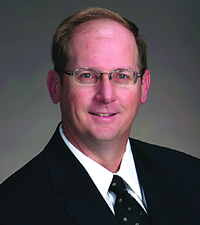 David Peterson
David Peterson
Scottsdale Unified School District
Arizona
A superintendent with “laser-like focus,” Peterson quickly instated technology as a key component of the district’s strategic plan, with a stated goal that focuses on increasing student access to digital learning resources.
For example, Peterson provided greater access to computers in the community through TekLink—a program that connects families, schools, and communities through the use of refurbished technology. Peterson initiated this program to help bridge the gap for families in the community with limited or no at-home access to a growing number of digital resources provided by the district. Through TekLink, families receive computers donated by the community and refurbished by high school students. The computers are paired with low-cost internet access provided through CenturyLink.
Peterson also developed an online learning program, which has grown from zero enrollments in 2010 to more than 1,500 concurrent enrollments today. Additionally, the district started a program to provide online courses to students in rural Arizona using Scottsdale’s eLearning teaching staff. The program continues to expand, serving additional middle and high school students in a blended learning environment.
In developing a technology plan, Peterson has effectively woven technology into the teaching and learning fabric in 31 schools. The heart of the plan has placed modern technology resources in some 1,700 classrooms, providing interactive technologies and professional development across the district. He also played a key role in obtaining the funding resources needed to meet this need.
Peterson leads by example, conducting principals’ meetings online, embracing new technologies, and providing an environment that encourages all staff to explore how new technologies can be tools to improve learning.
 David Tebo
David Tebo
Hamilton Community Schools
Michigan
Tebo is not only a leader of a highly successful school district; he also is a leader among his administrative peers because of his ability to look at education differently.
Tebo encourages his staff to be active in social media, and he regularly uses Twitter (@tebotweets) to share and discuss educational issues. Through his personal learning network (PLN), Tebo brings ideas from all over the world to a sprawling district of cornfields and pig farms. Since his arrival two years ago, more and more teachers are following his example and expanding their own PLNs to gain access to 21st-century teaching resources.
Tebo helped lead a creative shift in how the elementary-level technology teachers were scheduled. Technology teachers became integration coaches and have made a significant impact on the amount of daily, side-by-side, just-in-time training they have been able to provide to classroom teachers.
Tebo continually identifies ways to increase district efficiency. Since he has taken the reins, a number of burdensome paper trails have been re-imagined into an easy-to-track electronic method. These little efficiencies have freed up more staff time and energy to focus on teaching and learning.
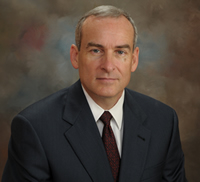 Casey Wardynski
Casey Wardynski
Huntsville City Schools
Alabama
Under Wardynski’s leadership, Huntsville City Schools launched a collaborative, district-wide effort to better prepare students for college and careers by moving to one-to-one learning.
When Wardynski arrived, Huntsville faced a major budget shortfall that threatened the future of the public school system. Under his bold plan, the district challenged conventional school reform with a giant leap to transform the education experience.
Heavy textbooks were swapped out for interactive, digital curriculum on laptops and iPads, schools were connected with robust internet networks, and Wi-Fi was installed in school buses and expanded in public areas throughout the city. Huntsville educators now use interactive texts, videos, animations, and other tools from rigorous, digital instructional programs in their lessons to make them more engaging and personalized for each student, while assessment tools help determine in real time each student’s level of performance. Teacher reports and school records already show Huntsville students more engaged and interested in learning after the one-to-one learning initiative launched this school year, with suspensions down 56 percent from last year—a big improvement in student behavior.
At the beginning of the 2012-13 school year, all students received laptop computers, netbooks, or access to iPads, and all classroom teachers received laptops. Extensive staff development took place prior to the start of classes, and this continues throughout the year. The school district is dedicated to providing free, 24-7 access to the curriculum for all students, regardless of their family’s financial situation.
- Schools and Districts Nationwide Partner with TinkRworks to Engage Students in STEAM Project-Based Learning - November 22, 2024
- BusPatrol Recognized Among Fastest-Growing Companies in North America on the 2024 Deloitte Technology Fast 500™ - November 21, 2024
- Illustration, Comic & Animation App Clip Studio Paint Named Best for Large Screens by Google Play - November 19, 2024


Comments are closed.